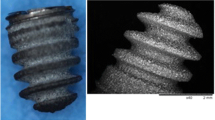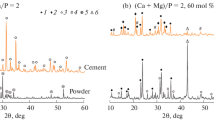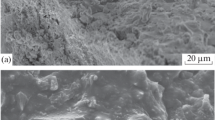Abstract:
Osteomyelitis is generally treated by the systemic administration of antibiotics and continuous irrigation after curettage of the lesion, and bone graft is performed secondarily to treat any bone defect. This treatment is associated with major invasion, and also has adverse effects on other organs. If a superior bone filling material were to be developed that allowed high concentrations of antibiotics that acted only locally, and allowed bone formation at the same time, an ideal method of treating osteomyelitis would become available. We created an implant composed of calcium phosphate cement, gentamicin, and poly-L-lactic acid. The results of sustained-release testing in vivo and in vitro demonstrated the release of effective antibiotic concentrations over a 2-month period. Further, when an experimental model of osteomyelitis was produced in rabbits and the implant was inserted after bone marrow curettage, the implant proved effective in preventing the progression of osteomyelitis and in achieving local bone formation.
Similar content being viewed by others
Author information
Authors and Affiliations
Additional information
Received for publication on Feb. 13, 1998; accepted on Feb. 24, 1999
About this article
Cite this article
Sasaki, S., Ishii, Y. Apatite cement containing antibiotics: efficacy in treating experimental osteomyelitis. J Orthop Sci 4, 361–369 (1999). https://doi.org/10.1007/s007760050117
Issue Date:
DOI: https://doi.org/10.1007/s007760050117




